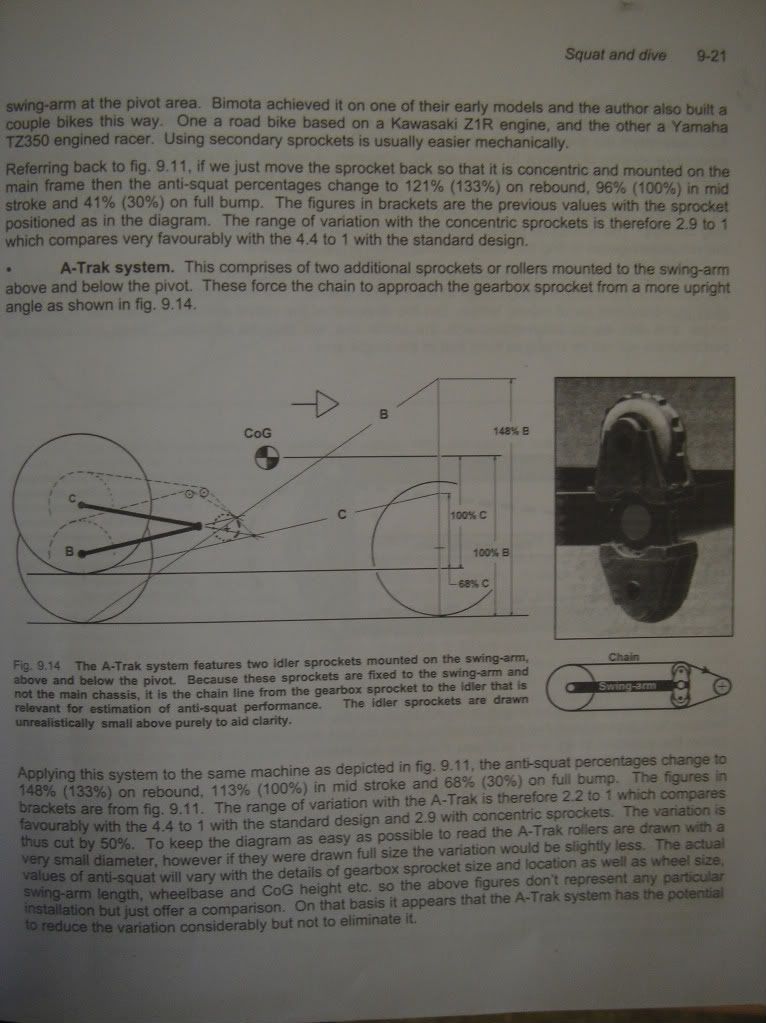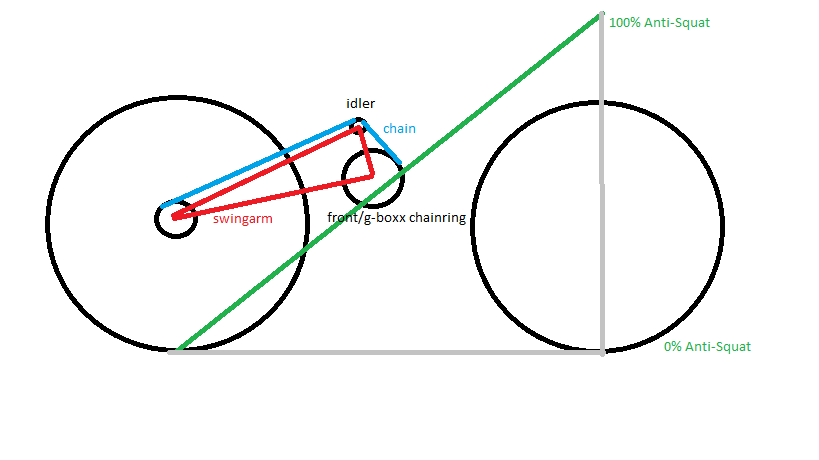OK peeps- a question for ya;
When an idler/pulley is attached to the SWINGARM of a bike (like the Empire AP-1), is the important chain force line the one from the front chainring to the idler or from the idler to the rear sprocket?
It is my understanding that the chainforce line from the front chainring to the idler is the correct one (as per Tony Foale's 2002/2003 edition book) but the Linkage program uses the idler to the rear sprocket/cassette as the one for the Anti-Squat calculations.
Any further thoughts?
When an idler/pulley is attached to the SWINGARM of a bike (like the Empire AP-1), is the important chain force line the one from the front chainring to the idler or from the idler to the rear sprocket?
It is my understanding that the chainforce line from the front chainring to the idler is the correct one (as per Tony Foale's 2002/2003 edition book) but the Linkage program uses the idler to the rear sprocket/cassette as the one for the Anti-Squat calculations.
Any further thoughts?




 . God save the beer
. God save the beer .
.




 .
.